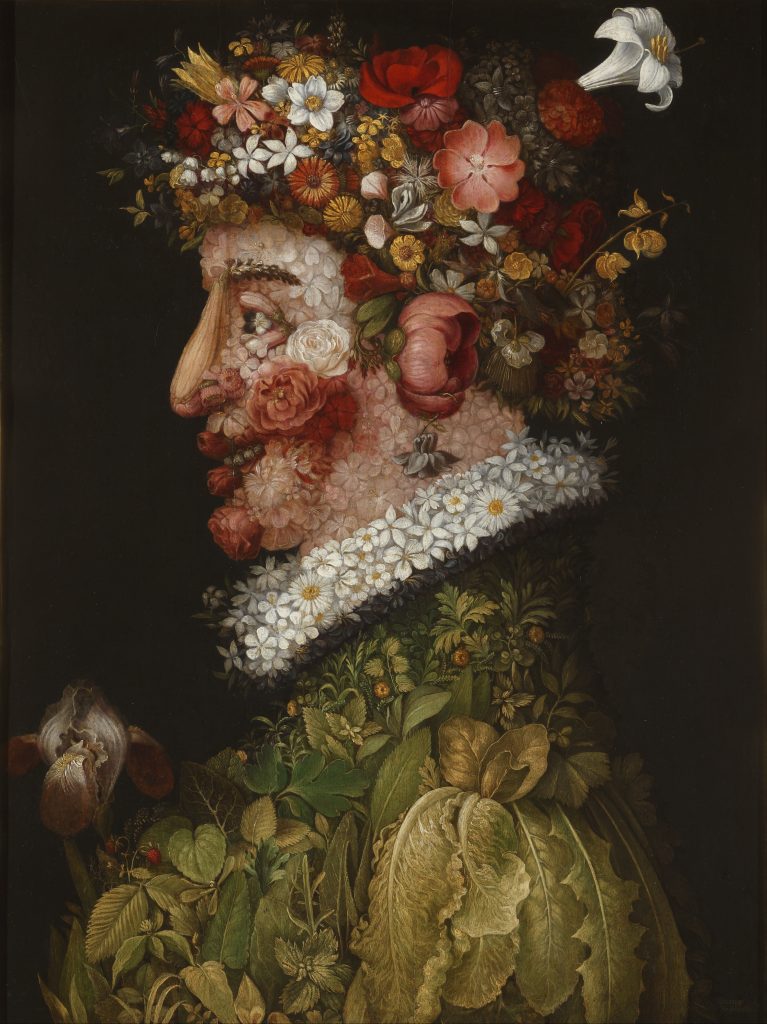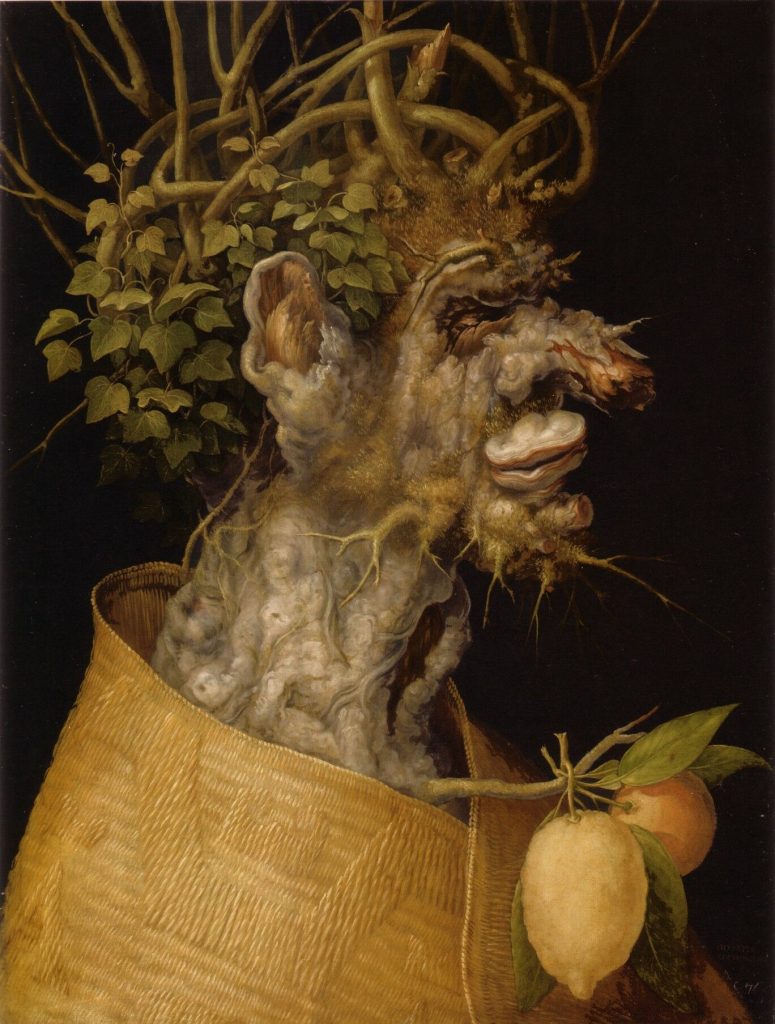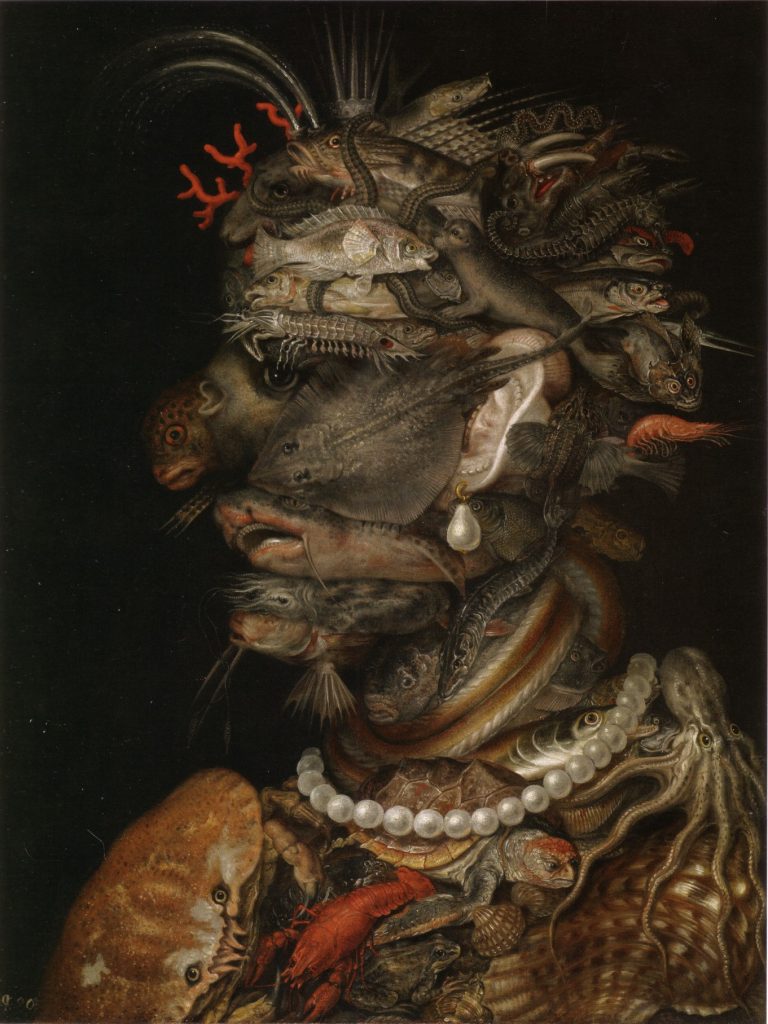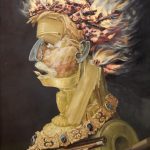
Giuseppe Arcimboldo (1526 or 1527 – 1593) was an Italian Renaissance painter known for his unique and imaginative portraits composed of fruits, vegetables, flowers, and other natural elements. His art is often described as Mannerist and is celebrated for its creativity and whimsy.

- Early Life: Arcimboldo was born in Milan, Italy, into a family of artists. His father was a painter, and he likely received his early artistic training from him. Little is known about his early life, but he is believed to have been influenced by the artistic culture of Milan.
- Career in the Habsburg Court: Arcimboldo’s career took off when he entered the service of the Habsburg Emperor Maximilian II in Vienna around 1562. He worked as a court painter and quickly gained recognition for his innovative and eccentric portraiture. During this time, he created some of his most famous works.
- Unique Portraits: Arcimboldo’s most notable works are his “composite portraits.” These portraits are composed entirely of various objects, such as fruits, vegetables, books, or animals, arranged to resemble the subject’s face. For example, in his portrait “Vertumnus,” he used fruits and vegetables to create the likeness of the Holy Roman Emperor Rudolf II.
- Variations and Themes: Arcimboldo created various series of composite portraits, each with its own theme. One series, known as “The Four Seasons,” depicted seasonal transformations using appropriate objects. Another series, “The Four Elements,” represented Earth, Water, Air, and Fire through imaginative arrangements.
- Artistic Legacy: Giuseppe Arcimboldo’s art was both playful and allegorical. His work was appreciated not only for its visual appeal but also for its intellectual depth. He was known for his ability to combine creativity with symbolism.
- Later Life: Arcimboldo continued to serve the Habsburg court under successive emperors, including Rudolf II. He also worked on various decorative projects and designs for court festivities.
- Posthumous Recognition: After Arcimboldo’s death in 1593, his art fell out of favor for several centuries. However, in the 20th century, there was a revival of interest in his work, and he gained recognition as an important and unique figure in art history. His imaginative portraits continue to inspire and captivate art enthusiasts and scholars alike.

Giuseppe Arcimboldo’s legacy lives on through his inventive and surrealistic portraits, which remain celebrated for their creativity and ingenuity, pushing the boundaries of portraiture in the Renaissance era. His works are now displayed in museums around the world, and he is remembered as a master of the unexpected in art.




